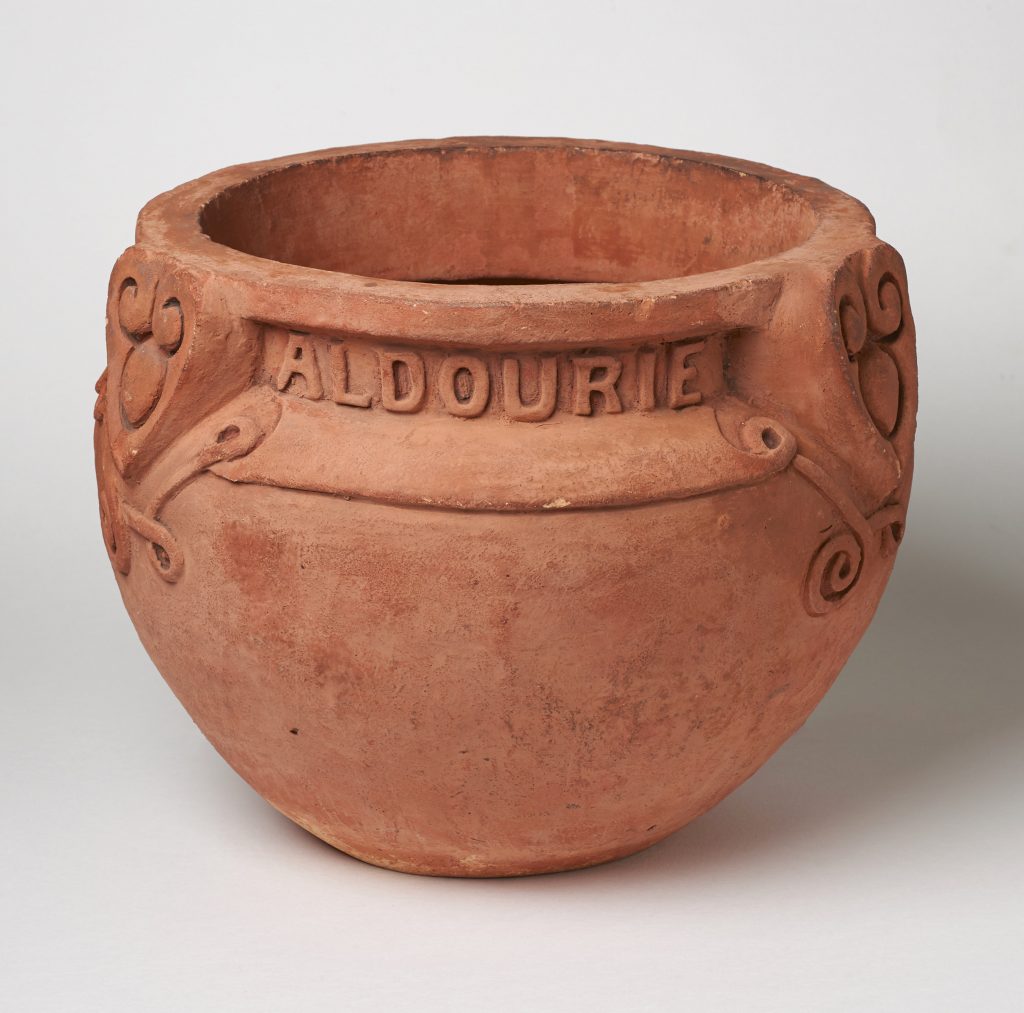
A new exhibit at Inverness Museum and Art Gallery puts pottery from the museum’s collections in the spotlight.
The new display – Of Earth and Fire – features a range of different pottery through the ages from teapots to platters – but it is the garden pots that are the stars of the show.
Made by the Aldourie Pottery at Dores, the garden pots were donated by Mary Seton Watts, the pottery’s founder, in 1908, and are on public display for the first time in living memory.
Curator of Collections at the museum Kari Moodie said: “The Aldourie Pottery specialised in terracotta pots and garden ornaments made in the Arts & Crafts style.
“We have two flower boxes and a segment from a sundial as well as four large pots representing some of their most popular designs – Scroll, Snake, Duchess, and Floreat – the Floreat being exceptionally rare as it incorporates the name of the Aldourie Pottery into the design.”
Mary Seton Watts was born Mary Fraser-Tytler and had a strong connection to Dores and the Highlands as she was brought up at Aldourie Castle by her grandparents.
Her grandfather was William Fraser-Tytler – Sheriff of Inverness and who owned properties including Aldourie Castle and Balnain House.
He played a leading role in having the new courtrooms and jail built on Castle Hill and his marble bust still overlooks the main staircase of Inverness Castle.
After marrying the famous Victorian painter George Frederic Watts, Mary moved to Compton in Surrey in 1886.
She organised a regular pottery class to encourage people to help make the tiles for a new chapel at Compton. So popular, Mary established a permanent pottery making terracotta products and gained an impressive list of clients including Liberty & Co.
Curator Kari Moodie continued: “The aim of the pottery was to create work in a rural area where employment opportunities were few and Mary decided she wanted to replicate the success of Compton in her childhood home so, around 1900, the Aldourie Pottery was founded.
“From the start there were problems – the local clay was not good enough, so clay had to be imported from Cumnock in Ayrshire, and the kilns took a long time to build so the products initially had to be sent south to be fired.
“Mary was still living 600 miles away in Surrey, so manging the enterprise was tricky and, after her husband died in 1904, it seems the pottery stopped production.”
She added: “Although it was short-lived, the Aldourie Pottery produced some beautiful work and shows how the Highlands was part of a wider art movement.
“We are so glad that Mary Watts felt inspired to support Inverness Museum back in 1908 by making this donation to the collection.
“Terracotta does not survive well outdoors so examples of Aldourie Pottery are now extremely rare, making this a very prized group of pots.”
The Aldourie pots are on show along with some examples of studio pottery, tableware and archaeology finds from Castle Street, to reveal the range of ceramics held in the museum’s collection.
They will be on display until October 16 in the Foyer Gallery on the first floor of Inverness Museum & Art Gallery, run by High Life Highland.


